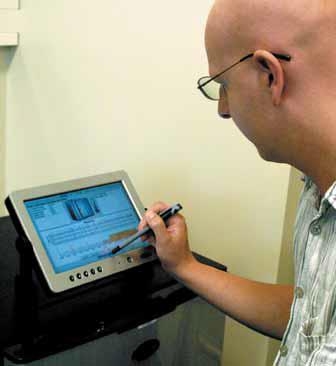The icebox gets ‘smart’

As the cost of electricity, and the demand for such, continues to increase, the Commonwealth Scientific and Industrial Research Organisation (CSIRO) has turned its attention to finding new ways of ensuring the power grid doesn’t suffer any outages during peak demand periods.
In particular, the organisation is looking at new ways to promote load shedding in ubiquitous appliances, such as air conditioners and refrigerators.
ADVERTISEMENT
Load shedding is not a new concept, but the research organisation is taking it one step further by making it intuitive. To wit, CSIRO’s Intelligent Energy team has developed a fridge capable of maintaining its average temperature while regulating its power consumption from renewable-energy generators, such as solar panels or wind turbines.
CSIRO engineer Sam West says the smart fridges work as a network of distributed devices, each fitted with control technology that allows them to communicate with each other via a network to share and store the energy provided by renewable-power generators.
“The fridges are designed to talk to each other, negotiating when it’s a good time to consume electricity and when it’s better not to,” he says.
“These scheduling decisions improve the quality of electricity produced by renewables and can help increase renewable uptake in the energy market.”
During the day, for example, supplies of electricity generated from photovoltaics can be interrupted by cloud cover resulting in periods of variable power supply.
“These fluctuations are bad for the electricity grid. Rapid variations in electricity flow can destabilise the grid and result in blackouts and other unwanted side-effects, but your fridge can help smooth out these fluctuations if it turns on and off at the right time.
“The fridges work together to decide when to cool down, and thus consume power, based on how much surplus power will be available. They are able to anticipate power shortages and change their running schedules accordingly to use as little power as possible during these times. In short, the fridges are working cooperatively to use the available power supply efficiently.”
The technology behind the smart fridges is a peer-to-peer network, kind of like in file sharing apps on the internet, which allows the modules to communicate with one another and to deal with dropouts in the network. If a number of the fridges in the network lose connectivity the remaining ones are robust enough to negotiate this into the operating schedule in the future.
Sam explains that the group chose fridges to demonstrate this technology because “they’re cheap and ubiquitous.”
“Everyone has a fridge in their house. But the technology is applicable to other appliances in the house, like air conditioners, or to a lesser extent pool pumps.
“Air conditioners, like fridges, don’t run all the time. Most have compressors that turn on and off to maintain a temperature between an upper and lower set point, unless they’re one of the newer inverter types.
“Most air conditioners will turn the compressor on and off while leaving the fan running all the time, so you get bursts of cool air. This means you can turn these devices on and off without violating these temperature constraints, which is quite useful considering there is a large population of these devices.
“This means you can turn all off to save power during peak demand events, or you can turn them all on to pre-cool them which means you can then turn them all off for longer to achieve a better demand response.”
These appliances can also be used to store energy.
The surplus electricity produced by solar panels can be used to lower the fridge temperature a few degrees more than necessary to create a thermal energy store which will keep the fridge’s contents cold for longer during when the compressor is subsequently switched off. Switching the compressor off for longer provides better demand response capabilities for the grid.
“Another benefit is that by reducing the amount of electricity required during peak-demand periods, we can avoid the need to build more network infrastructure such as new power stations.
“Using less electricity is always preferable to generating more and is the simplest way to reduce greenhouse gas emissions. Refrigeration can be very energy intensive but by harnessing renewable power this technology offers a low-emission solution to keeping food and other perishables cold.”
-
ADVERTISEMENT
-
ADVERTISEMENT

